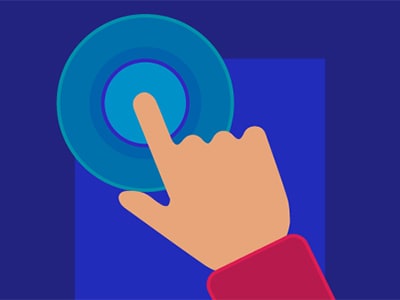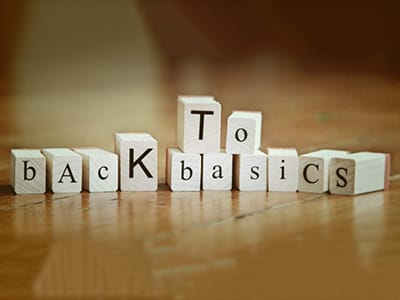Every project begins the same way: with an identified client need. Sometimes this need is clearly defined from the outset, but often a bit of analysis is required to get a handle on its true scope. Generally, we whittle away at our shared challenge and create a roadmap towards an appropriate solution.
At Obsidian Learning, we’ve spent over 20 years honing our process, always adapting it slightly to adjust to client and project specificities. In this post we’ll let you in on what we’ve discovered to be some best practices in navigating your way through custom eLearning content development.
Discovery Phase
The discovery phase always begins with a kickoff meeting where we embark on our exploration of the task at hand. This is where subject matter experts and learning strategists meet to hash out learning objectives, competency levels, and possible delivery methods.
1. Create a Design Document for your Custom eLearning
The main deliverable of a kickoff meeting is a design document. This document is the roadmap for the course, and clearly lays out what we are doing, why we are doing it, and how we intend to accomplish our goals. This document highlights the current business needs and puts the project into context. We then help define specific training goals. We gather content and/or arrange to interview appropriate subject matter experts to generate content. Click here to see a sample custom eLearning design document.
2. Determine Competency Level for your Custom eLearning
A key component of the design document is determining the competency level that will be expected of participants as a result of the training. The three levels of competency are:
- Awareness – Your audience just needs to be made aware of something (e.g., there is a new benefit available to them starting on the 1st of the next month).
- Application – Your learners need to be able to do something in a different way after taking the course (e.g., they need to know how to select and enroll in the new benefit before the 1st of the next month).
- Mastery – Your learning needs to be sufficiently skilled at something such that they can guide someone else in performing the task (e.g., your learners are in the HR team, and they will be supporting employees throughout the benefit-selection process before the 1st of the next month).
Deciding what level of mastery is required can shape your course objectives.
3. Determine Delivery Methods for your Custom eLearning
To effectively address the competency requirements, determine the appropriate delivery methods for the content. Below we describe various options and the needs for which they are best suited.
WBT: A custom web-based training (WBT) is a good solution for goals that need to be measured, for example when specific standards need to be met for external or internal compliance. WBTs also ensure that all employees are trained in a consistent manner; that is, all employees receive the same training in the same way.
Video: A video might be the best custom eLearning solution when a client needs to explain a topic quickly and in an engaging way but does not require the learner to take a course or go to a meeting or to a classic training course. This method of deployment allows the learner to reference the material on their own time without overly interfering with daily work, travel, or meetings.
ILT: Instructor-led training (ILT) is the appropriate custom eLearning method for more complex content that requires detailed instruction by an expert or live mentor. ILTs are excellent vehicles for content that involves hands-on practice.
Learning Portal: A learning portal is an apt custom solution for packaging a variety of delivery methods. It may make sense to have one topic explained in a video, another through a game or exercise, and more information provided through a few quick micro learning modules. A learning portal allows you to house all your learning offerings in one place, with easy access through a single interface for your users. This type of custom navigation can be helpful for quick reference needs.
Of course you must also consider schedule, budget, and infrastructure when selecting delivery methods of custom eLearning.
Development Phase
Once you’ve nailed down the content and determined the best delivery strategy, you’ll need to move on to developing your deliverables. Here are a few best practices associated with specific deliverable type.
4. WBT – Define Objectives
When developing a course, it is important to define both course level objectives and lesson level objectives. What will the learner be able to do or know after taking the course? Once the course level objectives are identified, we develop related lesson learning objectives. If your course is divided into modules or units, you may consider developing 2-3 lesson-level objectives for each module. For more information about writing objectives for custom eLearning, see our recent blog post.
5. Video – Follow the Process
When developing custom animation, it’s important to follow a process to reduce the amount of time used on edits later in the development. Every step builds upon the last one, so ensuring that each phase has been approved before moving forward is critical. Begin with a solid script and move to a static visual storyboard. The storyboard will help see if there are any holes in the script, or if it needs to be edited in any way. If at all possible, script edits should be made prior to the time-intensive animation process. Editing the script after animating the first draft (though sometimes unavoidable), will eat up costly production time.
6. Learning Portal – Structure
One of the main advantages of this delivery method is the ability to structure the content with usability at the forefront of the design. It is helpful to begin the development process with an Excel spreadsheet mapping out the content and aligning it with specific learning objectives. This supports the development of the initial wireframe and informs the programmer’s decisions on user experience.
7. All eLearning – Collaborate and React
Throughout the development process of custom eLearning, it can be helpful to think of the design document as evergreen. We never quite end up with the course that we imagined at the outset. The process is extremely collaborative. There is a necessary – and often extremely productive – push and pull between what the SME deems to be absolutely essential information and what the course developer knows is necessary for course pacing and to maintain participant interest. Your role is to listen to your SME and provide solutions for transmitting that essential information. It doesn’t always have to be embedded in the course; it can be supporting material, for example.
Much as we provide our clients with custom roadmaps that outline client need, learning objectives, and proposed solutions, we hope that the best practices that we’ve outlined here provide you with a roadmap toward producing effective and engaging custom eLearning deliverables.







